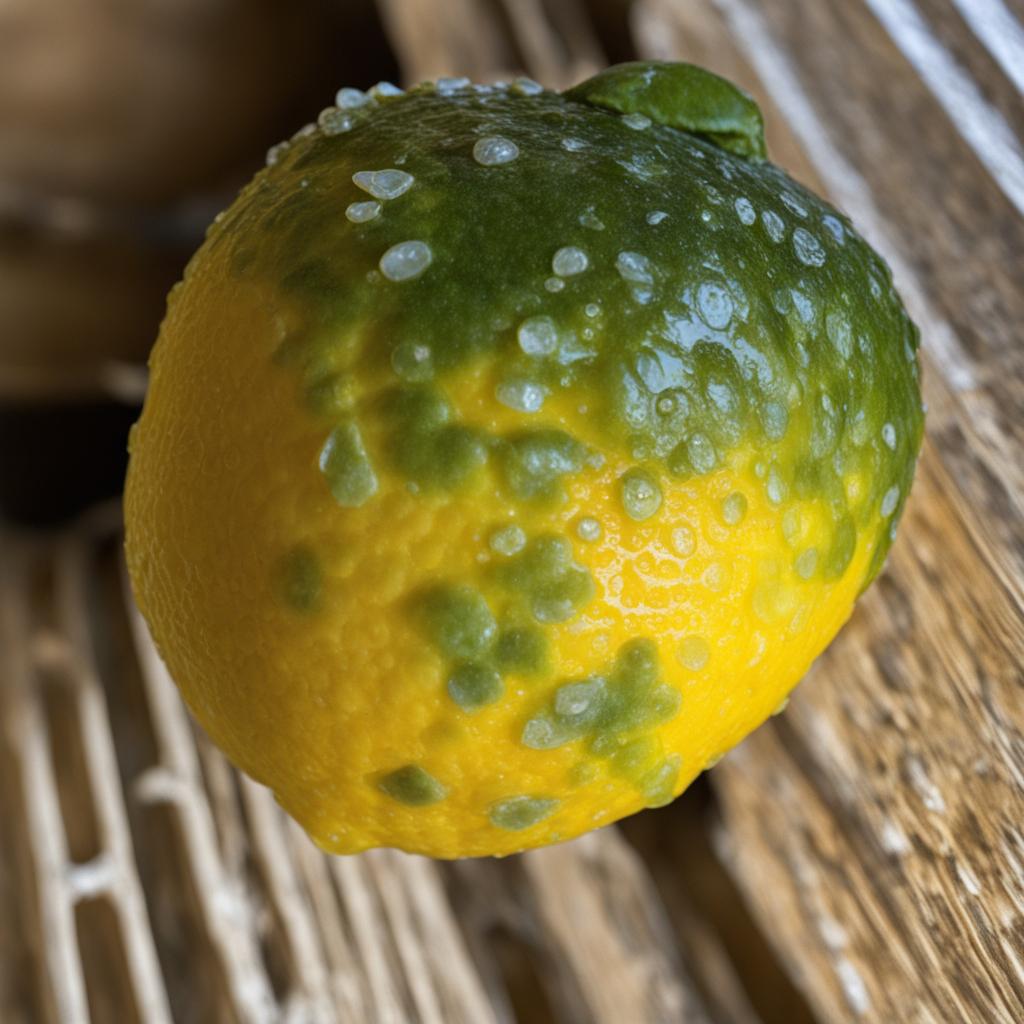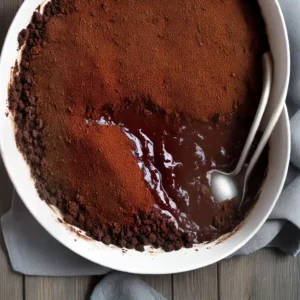As a lemon lover and avid cook, I’ve learned the importance of using fresh, high-quality ingredients in my recipes. There’s nothing worse than reaching for a lemon, only to discover that it has gone bad. That’s why I want to share some tips on how to tell if a lemon is bad, so you can avoid any culinary disasters.
Key Takeaways:
- Look for bruising, discoloration, soft spots, mold, and dryness as signs of a bad lemon.
- Loss of glossiness, off taste, loss of aroma, and unpleasant smell are indicators of decay.
- Darkened ends, pale color, fermentation smell, sliminess, and loss of acidity are other signs to watch out for.
- Proper storage in the refrigerator can help extend the shelf life of lemons.
- When in doubt, it’s best to discard a lemon that shows any of these signs to ensure the best results in your recipes.
Signs of a Bad Lemon: Bruising and Discoloration
When it comes to determining if a lemon is bad, one of the first signs to look out for is bruising and discoloration. Bruising occurs when the lemon’s skin is damaged, often resulting in soft spots and a change in color. If you notice any bruising or damaged areas on a lemon, it’s best to avoid purchasing or using it.
Bruised lemons are more susceptible to bacterial growth and decay, which can affect the taste and safety of the fruit. Additionally, discoloration may accompany bruising, causing the lemon’s skin to appear darker or discolored in patches. This discoloration is a visual cue that the lemon is no longer fresh and may have started to spoil.
To ensure that you are using fresh lemons for your recipes, it’s important to choose ones that are free from bruising and discoloration. A fresh lemon should have a vibrant, uniform yellow skin without any signs of damage. By carefully inspecting lemons for bruising and discoloration, you can ensure that the lemons you use in your cooking or baking are of the highest quality.
Table: Comparison of Fresh Lemons vs. Bad Lemons
| Characteristic | Fresh Lemons | Bad Lemons |
|---|---|---|
| Bruising | No bruising or damage | Visible bruising and soft spots |
| Discoloration | Uniform yellow skin | Darkened or discolored patches |
| Texture | Firm and smooth | Soft or mushy |
| Aroma | Fresh citrus smell | Off or unpleasant odor |
| Taste | Tart and tangy | Off or bitter taste |
By avoiding lemons with bruising and discoloration, you can ensure that your recipes turn out delicious and free from any potential spoilage. Remember, fresh lemons should have a vibrant appearance, smooth texture, and a pleasant citrus aroma. Keep these signs in mind when selecting lemons to ensure the best results in your culinary creations.
Signs of a Bad Lemon: Soft Spots
Soft spots on a lemon’s skin are a clear indication that it has started to decay. These soft spots often appear in areas that were slightly bruised in the beginning. While some slight brown discoloration on the skin may be acceptable, if the skin has soft spots and the flesh of the lemon is discolored and overly soft, it’s best to discard the lemon.
Soft spots are areas on the lemon’s skin where the underlying flesh has become mushy and discolored. They are usually the result of bruises or cuts that occurred during harvesting, transportation, or storage. As the lemon ages, these damaged areas deteriorate further, leading to a soft, squishy texture.
To identify soft spots on a lemon, gently press the skin with your fingers. If it feels mushy or gives in easily, it is likely a sign of decay. Additionally, examine the skin for any changes in color. Discoloration, especially darkening or browning, is an indication that the lemon is no longer fresh. A good lemon should have firm, vibrant skin without any soft or discolored areas.
Table: Signs of a Bad Lemon: Soft Spots
| Signs of a Bad Lemon | Description |
|---|---|
| Soft spots | Areas on the lemon’s skin that feel mushy or give in easily when pressed. |
| Discoloration | Darkening or browning of the lemon’s skin, indicating decay. |
| Overly soft flesh | The flesh of the lemon becomes mushy and discolored. |
When using lemons for cooking or baking, it’s important to use fresh and healthy ones to ensure the best flavor and quality of your dishes. Soft spots indicate that the lemon has started to deteriorate and may contain harmful bacteria. Consuming a lemon with soft spots can lead to foodborne illnesses.
To prevent buying or using lemons with soft spots, carefully inspect each lemon before purchasing. Choose lemons with firm skin, free of any bruises or cuts. If you notice any soft spots on the lemons you already have at home, it’s best to discard them rather than risk compromising the taste and safety of your recipes.
Signs of a Bad Lemon: Mold
One of the most evident signs that a lemon has gone bad is the presence of mold. Mold growth on lemons is a clear indication of advanced decay and should not be ignored. It can appear as small velvet circles on the skin and may also develop inside the lemon itself.
Moldy lemons are not safe to use as the mold can branch into the fruit and pose a health hazard. It’s important to discard any lemons that show signs of mold to prevent further contamination. If you come across moldy lemons in your refrigerator, it’s advisable to clean the fridge thoroughly to avoid the spread of mold.
“Mold growth on lemons is a sign of advanced decay. Moldy lemons are not safe to use as the mold can branch into the fruit and pose a health hazard.”
When encountering moldy lemons, it’s crucial to prioritize food safety and discard them immediately. Mold is a common type of fungus that thrives in warm and moist environments, making it important to properly store lemons in the refrigerator to extend their shelf life and decrease the likelihood of mold growth.
| Signs of a Bad Lemon | Description |
|---|---|
| Mold | Indicates advanced decay; mold growth can occur on the skin and inside the lemon |
| Bruising and Discoloration | Visible signs of damage and decay; bruising and discoloration often occur together |
| Soft Spots | Indicate decay; soft spots are typically found in areas previously bruised |
| Dryness and Shriveling | Result from aging and loss of moisture; texture becomes rough and leathery |
Signs of a Bad Lemon: Dryness and Shriveling
Dryness and shriveling are common signs that a lemon has gone bad. When a lemon ages and starts to decay, it loses its moisture content, resulting in a dry and rough texture. If you notice that the skin of a lemon is overly shriveled and feels rough to the touch, it is a clear indication that the lemon is no longer fresh and should not be used.
In addition to the dryness, a bad lemon may also exhibit signs of shriveling. The lemon’s skin may appear wrinkled and lack its usual plumpness. This wrinkling is a visual cue that the lemon has deteriorated and is past its prime. It’s important to note that while some wrinkling may be acceptable, an excessively shriveled lemon is an indicator of spoilage.
To illustrate the effects of dryness and shriveling, here is a comparison table:
| Good Lemon | Bad Lemon |
|---|---|
| Smooth and glossy skin | Dry and rough skin |
| Plump and firm texture | Wrinkled and shriveled texture |
| Moist and juicy flesh | Dry and lack of juice |
As shown in the table, a good lemon exhibits a smooth and glossy skin, a plump and firm texture, as well as a moist and juicy flesh. On the other hand, a bad lemon will have dry and rough skin, a wrinkled and shriveled texture, and a lack of juice in the flesh.
When encountering a lemon with signs of dryness and shriveling, it’s best to discard it and opt for a fresh one to ensure the quality and taste of your dishes.
Signs of a Bad Lemon: Weight Loss and Lack of Juice
A surefire way to determine if a lemon has gone bad is by its weight and lack of juice. A fresh and ripe lemon should feel heavy in your hand, indicating a high water content. However, a bad lemon will feel noticeably light, suggesting that it has lost moisture and weight over time. This weight loss can occur due to natural evaporation or improper storage conditions.
When you cut open a bad lemon, you’ll notice a significant lack of juice. A fresh lemon should release ample amounts of juice when squeezed, which is one of its defining characteristics. But when a lemon has gone bad, its flesh becomes dry and shriveled, resulting in a minimal amount of juice. This lack of juiciness is a clear indication that the lemon is past its prime and should not be used.
So, when evaluating lemons for freshness, be sure to pay attention to their weight and juiciness. A heavy lemon with a generous amount of juice is a sign of a fresh and flavorful fruit. On the other hand, a lemon that feels light and yields little to no juice is an indicator that it has gone bad and should be discarded.
Table: Comparison of Weight and Juice Content of Fresh and Bad Lemons
| Characteristics | Fresh Lemon | Bad Lemon |
|---|---|---|
| Weight | Heavy | Light |
| Juice Content | Abundant | Minimal to none |
The table above provides a quick comparison of the weight and juice content between a fresh lemon and a bad lemon. It further emphasizes the importance of assessing these two factors when determining the quality and freshness of a lemon.
Signs of a Bad Lemon: Off Taste and Bitter Flavor
When it comes to determining if a lemon has gone bad, one of the key indicators is the taste. A bad lemon will have an off taste and a bitter flavor. If you find that your lemon tastes different than it should, it’s a clear sign that it has gone bad.
The off taste and bitter flavor are indications of decay and spoilage. The natural sweetness and tanginess that you expect from a fresh lemon will be replaced by unpleasant flavors. It’s important to trust your taste buds and not consume a lemon that tastes off or bitter.
If you’re unsure about the taste of a lemon, it’s always better to err on the side of caution and discard it. Using a bad lemon can negatively affect the taste of your recipes and potentially ruin your dish. It’s not worth the risk when there are easy ways to tell if a lemon has gone bad.
| Signs of a Bad Lemon | Description |
|---|---|
| Off taste | The lemon will taste different than it should, with unpleasant flavors. |
| Bitter flavor | The lemon will have a bitter taste, indicating spoilage. |
How to Tell if a Lemon is Bad:
- Trust your taste buds – if the lemon tastes off or bitter, it’s a clear sign of decay.
- Discard the lemon if you’re unsure – it’s better to be safe than sorry.
- Avoid using a bad lemon in recipes – it can negatively affect the taste of your dish.
By keeping an eye out for the signs of an off taste and bitter flavor, you can ensure that you only use fresh and flavorful lemons in your cooking.

Signs of a Bad Lemon: Loss of Glossiness and Disfigured Shape
When determining whether a lemon has gone bad, it’s important to pay attention to its appearance. One of the key signs of a bad lemon is the loss of glossiness on its skin. A fresh, ripe lemon should have a vibrant, glossy appearance, indicating its freshness and juiciness. However, a bad lemon may lose its natural shine and develop a dull, lackluster look.
In addition to the loss of glossiness, a bad lemon may also exhibit a disfigured shape. Normally, lemons have a smooth, oval shape with a slight taper at both ends. However, a lemon that has gone bad may become misshapen, with irregular bumps or indentations on its surface. This change in shape is often accompanied by a deterioration in the lemon’s texture and taste.
To visually illustrate the signs of a bad lemon, refer to the table below:
| Sign | Description |
|---|---|
| Loss of Glossiness | The lemon’s skin appears dull and lacks its natural shine. |
| Disfigured Shape | The lemon is misshapen, with irregular bumps or indentations. |
“A bad lemon may lose its natural glossiness and develop a dull appearance. The shape of the lemon may also become disfigured. These changes in appearance are indicators that the lemon has deteriorated and is no longer fresh.”
If you come across a lemon that exhibits these visual signs, it’s best to discard it and opt for a fresh one. Bad lemons may lack the desired juiciness, flavor, and aroma needed for culinary creations. It’s always a good practice to inspect lemons before using them to ensure the best results in your recipes.

Signs of a Bad Lemon: Pitting and Wrinkling
If you’ve ever come across a lemon with pitting and wrinkling on its skin, it’s a sure sign that the fruit has gone bad. Pitting refers to the small depressions or pits that develop on the lemon’s surface, while wrinkling refers to the shriveled and creased appearance of the skin. These changes in texture are clear indicators that the lemon has deteriorated and is no longer suitable for use.
When a lemon starts to pit and wrinkle, it often means that it has lost a significant amount of moisture and is dehydrated. This can happen over time as the lemon ages and begins to decay. The loss of moisture causes the skin to become less firm and more wrinkled, creating an unappealing appearance.
While pitting and wrinkling alone may not necessarily make a lemon unsafe to consume, they are signs that the fruit is past its prime and may not have the same flavor or quality as a fresh lemon. It’s best to use lemons that are firm, smooth, and have a vibrant color, as these are indications of their freshness and taste.
| Signs of a Bad Lemon | Description |
|---|---|
| Pitting | Small depressions or pits on the lemon’s skin |
| Wrinkling | Shriveled and creased appearance of the skin |
| Lack of firmness | Soft and less firm texture |
| Loss of vibrancy | Dull and faded color |
It’s important to note that while pitting and wrinkling are common signs of a bad lemon, they are not the only indicators. Pay attention to other signs such as discoloration, mold growth, and off taste. Always trust your senses and use your judgment when determining the freshness of a lemon.
In conclusion, pitting and wrinkling are clear signs that a lemon has gone bad and should be discarded. These changes in texture indicate decay and loss of moisture, making the lemon less desirable for culinary use. When selecting lemons, opt for ones that are firm, smooth, and vibrant in color to ensure that you are getting the best quality and flavor. By being aware of these signs, you can confidently identify and avoid using bad lemons in your recipes.
Signs of a Bad Lemon: Loss of Aroma and Unpleasant Smell
In addition to visual cues, another way to determine if a lemon has gone bad is to rely on your sense of smell. A bad lemon will lose its characteristic citrus aroma and develop an unpleasant smell. When you bring a lemon close to your nose, you should be greeted with a fresh, vibrant citrus scent. However, if the lemon has gone bad, it may emit a sour or fermented odor that is quite different from its usual fragrance.
The loss of aroma and the development of an unpleasant smell are strong indications that the lemon is no longer fresh and should be discarded. The sour or fermented odor is a clear sign of decay and spoilage. To ensure that your recipes turn out delicious, it’s important to use fresh lemons with a vibrant aroma.
I always rely on my sense of smell when it comes to determining if a lemon is bad. If I detect a sour or fermented odor, I know it’s time to throw it out and use a fresh one. The smell is a dead giveaway that the lemon has gone bad.
To summarize, a bad lemon will lose its characteristic citrus aroma and develop an unpleasant smell. If the lemon has a sour or fermented odor, it’s a clear sign of decay. The unpleasant smell is a strong indication that the lemon is no longer fresh and should be discarded.
Now, let’s take a look at a detailed table summarizing the signs of a bad lemon:
| Signs of a Bad Lemon | Description |
|---|---|
| Loss of Aroma and Unpleasant Smell | The lemon will no longer have its characteristic citrus aroma and may emit a sour or fermented odor. |
| Bruising and Discoloration | The lemon will have visible bruising and a change in color, indicating decay. |
| Soft Spots | The lemon’s skin will have soft spots, often accompanied by discolored and overly soft flesh. |
| Mold | Mold growth on the lemon’s skin or inside the lemon indicates advanced decay. |
| Dryness and Shriveling | The lemon will become dry, shriveled, and rough in texture. |
Remember, if you notice a loss of aroma and an unpleasant smell, it’s a clear sign that the lemon has gone bad and should be discarded.
Signs of a Bad Lemon: Darkened Ends and Pale Color
Darkened ends and a pale color on a lemon are common signs that the fruit has gone bad. When a lemon starts to deteriorate, you may notice darkening at either the stem end or the blossom end of the fruit. This darkening is a clear indicator that the lemon is past its prime and should not be used.
In addition to darkened ends, a bad lemon may also exhibit a pale color throughout its skin. Instead of the vibrant and bright yellow hue that is characteristic of fresh lemons, a bad lemon may appear dull and lackluster. The pale color is a visual cue that the lemon has lost its freshness and should be discarded.
When inspecting lemons, it’s important to keep in mind that a healthy lemon may have a slightly darker or lighter shade at the stem or blossom end due to natural variations. However, if the darkening extends beyond these areas and the overall color of the lemon appears pale, it’s best to err on the side of caution and avoid using it.
Table: Signs of a Bad Lemon
| Sign | Description |
|---|---|
| Darkened Ends | Darkening at the stem or blossom end of the lemon |
| Pale Color | Dull and lackluster appearance instead of vibrant yellow |
| Bruising and Discoloration | Visible bruising and abnormal coloration on the skin |
| Soft Spots | Areas of the lemon’s skin that are excessively soft or discolored |
| Mold | Growth of mold on the surface of the lemon or inside the fruit |
| Dryness and Shriveling | Texture that feels dry, rough, and overly shriveled |
| Weight Loss and Lack of Juice | Lightweight lemon with minimal or no juice when cut open |
| Off Taste and Bitter Flavor | Unpleasant taste and bitter flavor that differs from normal lemons |
| Loss of Glossiness and Disfigured Shape | Loss of natural shine and an irregular or distorted shape |
| Pitting and Wrinkling | Development of small pits or depressions and wrinkled skin |
| Loss of Aroma and Unpleasant Smell | Diminished citrus aroma and the presence of a foul or sour smell |
| Fermented Smell and Sliminess | Signs of fermentation with a sour odor and slimy texture |
| Loss of Acidity and Souring | Bland taste lacking the characteristic acidity of lemons and sour aftertaste |
Remember, visual cues like darkened ends and pale color are reliable indicators of a lemon’s freshness. If you come across a lemon with these signs, it is best to discard it and opt for a fresh one to ensure the best results in your culinary endeavors.
Signs of a Bad Lemon: Fermented Smell and Sliminess
When it comes to identifying a bad lemon, two distinct signs to watch out for are a fermented smell and sliminess. These indicators are clear indications that the lemon has started to deteriorate and should be discarded.
A fermented smell is a telltale sign that the lemon has begun to undergo fermentation. If you detect a sour or unpleasant odor when you sniff the lemon, it’s a strong indication that it is no longer fresh and suitable for use. The fermentation process can alter the taste and quality of the lemon, making it unsuitable for cooking or consuming.
In addition to the fermented smell, a bad lemon may also exhibit a slimy texture. When you touch the lemon, it may feel slippery or greasy, indicating the presence of a slimy film on its surface. This sliminess is a clear sign of bacterial growth, and consuming a slimy lemon can be harmful to your health. It’s essential to avoid using lemons that feel slimy.
Table: Signs of a Bad Lemon
| Sign | Description |
|---|---|
| Bruising and Discoloration | Bruising and discoloration on the skin of the lemon. |
| Soft Spots | Soft areas on the lemon’s skin and discolored, overly soft flesh. |
| Mold | Growth of mold, both on the skin and inside the lemon. |
| Dryness and Shriveling | Dry, shriveled skin and rough texture. |
| Weight Loss and Lack of Juice | Lightweight lemon with little to no juice when cut open. |
| Off Taste and Bitter Flavor | Unpleasant taste and bitter flavor. |
| Loss of Glossiness and Disfigured Shape | Dull appearance and distorted shape. |
| Pitting and Wrinkling | Pits, depressions, and wrinkled skin. |
| Loss of Aroma and Unpleasant Smell | Loss of characteristic citrus aroma and development of an unpleasant smell. |
| Darkened Ends and Pale Color | Darkening at the ends and pale color throughout the lemon. |
| Fermented Smell and Sliminess | A sour, fermented odor and a slimy texture on the lemon’s surface. |
By being attentive to these signs, you can ensure that the lemons you use are fresh and safe. Remember, a bad lemon can negatively impact the taste and quality of your dishes, so it’s crucial to check for these signs before incorporating lemons into your recipes.
Signs of a Bad Lemon: Loss of Acidity and Souring
If you’ve ever tasted a lemon that lacked its signature tanginess or left an unpleasant aftertaste, it’s a clear indication that the lemon has gone bad. Loss of acidity and souring are signs of decay and spoilage in a lemon.
When lemons start to deteriorate, their natural acidity diminishes, resulting in a bland and less vibrant flavor profile. The acidic taste that we associate with lemons gradually fades away, leaving behind a dull and lackluster sensation on the palate. Combined with the loss of acidity, a bad lemon may develop a sour taste that lingers unpleasantly after each bite or squeeze.
When using lemons in cooking or making lemonade, it’s crucial to ensure they are fresh and full of flavor. A sour or bland lemon can significantly affect the taste of your dish or drink, compromising its quality. By being aware of the signs of loss of acidity and souring in lemons, you can ensure that your culinary creations retain their zesty and refreshing character.
Summary:
– Loss of acidity and souring are clear indications that a lemon has gone bad.
– Bad lemons lack the tanginess and vibrant flavor associated with fresh lemons.
– The sour taste and blandness of a bad lemon can negatively impact the quality of dishes and beverages.
Conclusion
In conclusion, knowing how to tell if a lemon is bad is crucial for maintaining the freshness and quality of your recipes. By being aware of the signs of a bad lemon, such as bruising, discoloration, soft spots, mold, dryness, and loss of glossiness, you can ensure that you only use lemons that are safe to consume.
It’s important to discard lemons with any of these signs as they can harbor bacteria and pose a health hazard. Additionally, off taste, loss of aroma, and unpleasant smells are clear indications that a lemon has gone bad. It’s always better to be safe than sorry, so trust your instincts when it comes to the freshness of lemons.
Remember to store your lemons properly in the refrigerator to prolong their shelf life. This will help to maintain their quality and ensure that you can fully enjoy the delicious flavor they bring to your dishes. So next time you grab a lemon for your cooking or baking needs, make sure it’s in good condition and ready to enhance your recipes with its vibrant citrus flavor.
FAQ
How can I tell if a lemon is bad?
Look for signs such as bruising, discoloration, soft spots, mold, dryness, loss of glossiness, off taste, loss of aroma, and other indicators outlined in this article.
What are the signs of a bad lemon?
Signs of a bad lemon include bruising and discoloration, soft spots, mold growth, dryness and shriveling, weight loss and lack of juice, off taste and bitter flavor, loss of glossiness and disfigured shape, pitting and wrinkling, loss of aroma and unpleasant smell, darkened ends and pale color, fermented smell and sliminess, and loss of acidity and souring.
Can I still use a lemon with brown discoloration on the skin?
Some slight brown discoloration on the skin may be acceptable, but if the skin has soft spots and the flesh of the lemon is discolored and overly soft, it’s best to discard the lemon.
Are moldy lemons safe to consume?
No, moldy lemons are not safe to use as the mold can branch into the fruit and pose a health hazard. If you notice mold growth on lemons, it’s best to discard them.
What should I do if a lemon feels light and yields little to no juice?
If a lemon feels light and yields little to no juice, it is a sign that it has gone bad and should be discarded.
Can I still use a lemon if it has an off taste?
No, an off taste and bitter flavor are indications of decay and spoilage in a lemon, so it’s best to discard it.
Should I be concerned if a lemon loses its natural glossiness and develops a dull appearance?
Yes, changes in appearance like loss of natural glossiness and a dull appearance are indicators that the lemon has deteriorated and is no longer fresh.
Can I still use a lemon if it has small pits or wrinkles on the skin?
Pitting and wrinkling on the skin of a lemon are signs of decay and age, so it’s best to discard the lemon.
Are lemons with a sour or fermented odor safe to consume?
No, an unpleasant smell like sour or fermented odor is a strong indication that the lemon is no longer fresh and should be discarded.
What should I do if a lemon has darkened ends or a pale color?
Darkened ends or a pale color throughout the lemon are signs of decay and loss of freshness, so it’s best to not use the lemon.
Can I still use a lemon if it feels slimy to the touch?
No, signs of fermentation and sliminess are clear indications that the lemon is no longer fresh and should be discarded.
Can I use a lemon that has lost its acidity?
Loss of acidity and souring are signs of decay and spoilage, so it’s best to not use a lemon with these characteristics.
Source Links
- https://gingerdivine.com/how-to-tell-if-a-lemon-is-bad/
- https://ipm.ucanr.edu/PMG/C107/m107bpfruitdis.html
- https://thishealthytable.com/blog/lemon-gone-bad/
Related Recipes:
 How to Store Lemons for Maximum Freshness
How to Store Lemons for Maximum Freshness
 How to Tell If a Cucumber Has Gone Bad
How to Tell If a Cucumber Has Gone Bad
 Can You Eat Expired Butter? What You Need to Know
Can You Eat Expired Butter? What You Need to Know
 Does Kimchi Go Bad? Tips for Storage and Shelf Life
Does Kimchi Go Bad? Tips for Storage and Shelf Life
 How to Get Onion Smell Off Hands: Quick Solutions
How to Get Onion Smell Off Hands: Quick Solutions
 Does Almond Milk Go Bad? How to Tell and Storage Tips.
Does Almond Milk Go Bad? How to Tell and Storage Tips.
 Do Shallots Go Bad? Tips for Storage and Shelf Life
Do Shallots Go Bad? Tips for Storage and Shelf Life
 Pineapple Storage: Tips for Longevity
Pineapple Storage: Tips for Longevity








